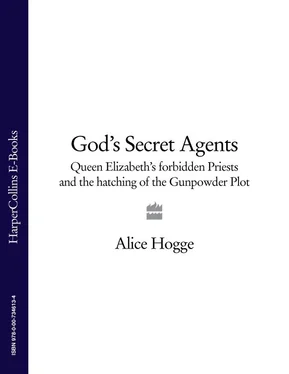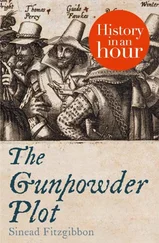GOD’S SECRET AGENTS
Queen Elizabeth’s Forbidden Priests and the Hatching of the Gunpowder Plot
ALICE HOGGE

To Nicholas Fordham
Cover Page
Title Page GOD’S SECRET AGENTS Queen Elizabeth’s Forbidden Priests and the Hatching of the Gunpowder Plot ALICE HOGGE
Dedication To Nicholas Fordham
One
Two
Three
Four
Five
Six
Seven
Eight
Nine
Ten
Eleven
Twelve
Epilogue
Author’s Note
Appendix
Endnotes
Bibliography
Index
Acknowledgements
About the Author
Copyright
About the Publisher
‘…as the waves of the sea, without stay, do one rise and overtake another,
so the Pope and his…ministers be never at rest, but as fast as one
enterprise faileth they take another in hand…hoping at last to prevail.’
Sir Walter Mildmay MP, October 1586
ARMADA YEAR, 1588, swept in on a flood tide of historical prophecies and dire predictions. For the numerologists, who divided the Christian calendar into vast, looping cycles of time, constructed in multiples of seven and ten and based on the Revelation of St John and the bloodier parts of the Book of Isaiah, the year offered nothing less than the opening of the Seventh Seal, the overthrow of Antichrist and the sounding of the trumpets for the Last Judgement. 1
For the fifteenth century mathematician Regiomontanus, although he had not been quite so specific about the year’s unfolding, still the promise of a solar eclipse in February, and not one but two lunar eclipses in March and August had not, he had thought, augured well. *Regiomontanus had recorded his findings in Latin verse, concluding: ‘If, this year, total catastrophe does not befall, if land and sea do not collapse in total ruin, yet will the whole world suffer in upheavals, empires will dwindle and from everywhere will be great lamentation.’ As the year began, in Prague the Holy Roman Emperor Rudolf II, himself a keen astrologer, scanned the heavens for signs that his was not the empire to which Regiomontanus referred. He could discover little more than that the weather that year would be unseasonably bad. 2
The printers of Amsterdam rang in the year with a special edition of their annual almanac, detailing in lurid prose the coming disasters: tempests and floods, midsummer snowstorms, darkness at midday, rain clouds of blood, monstrous births, and strange convulsions of the earth. On a more positive note, they suggested that things would calm down a bit after August and that late autumn might even be lucky for some, but this was not a January horoscope many read with pleasure.
In Spain and Portugal the sailors assembling along the western seaboard talked of little else, no matter that their King, His Most Catholic Majesty Philip II of Spain, regarded all attempts to divine the future as impious. In Lisbon a fortune-teller was arrested for ‘making false and discouraging predictions’, but the arrest came too late: the year had already begun with a flurry of naval desertions. In the Basque ports Philip’s recruiting drive slowed and halted ‘because of many strange and frightening portents that are rumoured’. 3
In Rome it was brought to the attention of Pope Sixtus V that a recent earth tremor in England had just disgorged an ancient marble slab, concealed for centuries beneath the crypt of Glastonbury Abbey, on which were written in letters of fire the opening words of Regiomontanus’ prediction. It was felt by the papal agent who delivered this report that the mathematician could not, therefore, be the original author of the verses and that the prophecy could stem from one source only: from the magician Merlin. It was the first hint that God might be on the side of the English. 4
But in England no one mentioned Merlin’s intervention in international affairs and the English almanacs that year were strangely muted affairs, proffering the general observation that ‘Here and in the quarters following might be noted…many strange events to happen which purposely are omitted in good consideration.’ With their fellow printers in Amsterdam working round the clock to meet the public’s demand for gruesome predictions, it seems odd the English press were grown so coy, particularly when the editor of Holinshed’s Chronicles had written the year before that Regiomontanus’ prophecy was ‘rife in every man’s mouth’. But it was not in the Government’s interest that England should be flooded with stories of death and destruction, for it was all too likely that any day now it would be visited by the real thing. * 5
For some four years now England and Spain had been at war: an undeclared phoney war, fought at third hand, on the battlefields of the Low Countries and up and down the Spanish Main, by mercenaries and privateers, most notably the ‘merry, careful’ Francis Drake. Drake’s raid on the port of Cadiz in April 1587 had cost Spain some thirty ships and had bought England a twelvemonth reprieve. But all this did was to postpone the inevitable until the fateful year 1588, because the Spanish were coming, with the mightiest fleet that had ever been amassed. Tall-sided galleons like floating castles, many-oared galleys, cargo-carrying urcas , nimble pataches and zabras , all these had been assembling in the west-coast ports of the Iberian peninsula since 1586. Together they could hold some thirty thousand men, numerous cavalry horses and pack animals and all the many carefully counted barrels of food and water needed to sustain a force of such size. The normally tight-fisted Pope Sixtus—‘When it comes to getting money out of him, it is like squeezing his life blood,’ wrote the Spanish ambassador Olivares to King Philip—had swallowed his respect for the English Queen, Elizabeth I, and signed a treaty with Spain, promising a million gold ducats (about £250,000) to Philip should he manage to conquer England, so long as the next English ruler, a position on which Philip had designs himself, returned the country to Catholicism. *The Duke of Parma, commander-in-chief of the Spanish Netherlands, was only waiting for the signal to embark his army in a flotilla of flat-bottomed landing-craft, cross the English Channel and sail his forces up the Thames estuary. And all across Europe, rulers and ruled alike stopped what they were doing to watch and wait for the outcome to this clash between the forces of good and evil. This was ideological warfare of a type never before fought in Europe, transcending national boundaries and old-fashioned disputes about landownership. And while the opposing ideologies were, inevitably, somewhat tarnished by political and personal self-interest, nonetheless, in its purest distillation, this war was billed as the deciding round in the conflict between Catholicism and Protestantism, the final answer to a question that had paralysed sixteenth-century Christian Europe, the question of what you could and could not believe. Though few could afford to be combatants, no one could afford to be neutral. But the result, it seemed, was a foregone conclusion. 6
Ranged against England were the combined forces of Spain, Portugal, the Italian States, and the Spanish Netherlands, with France, though as yet undecided, also likely to join the Catholic crusade. The English troops, in comparison with Spain’s professional, battle-hardened soldiers, were an ill-trained rabble of amateur militiamen, drafted into service at county-wide musters and required to pay for their own gunpowder for the duration of combat. The officers were no better. Most refused to take orders from anyone lower in social standing than themselves. Had it not been for the remodelling of the Queen’s Navy by Drake’s fellow sea-dog, John Hawkins, the outcome of the Armada conflict might well have been very different. Still, Hawkins’s core fleet of twenty-three warships and eighteen smaller pinnaces was heavily outnumbered by the sixty-five galleons that formed the heart of the Spanish Navy. And his belief that the success of Elizabeth’s ships lay in long-range gunnery rather than traditional short-range grappling was not helped by those English gunmakers still busily selling cannons to the Spanish as late as 1587. 7
Читать дальше













